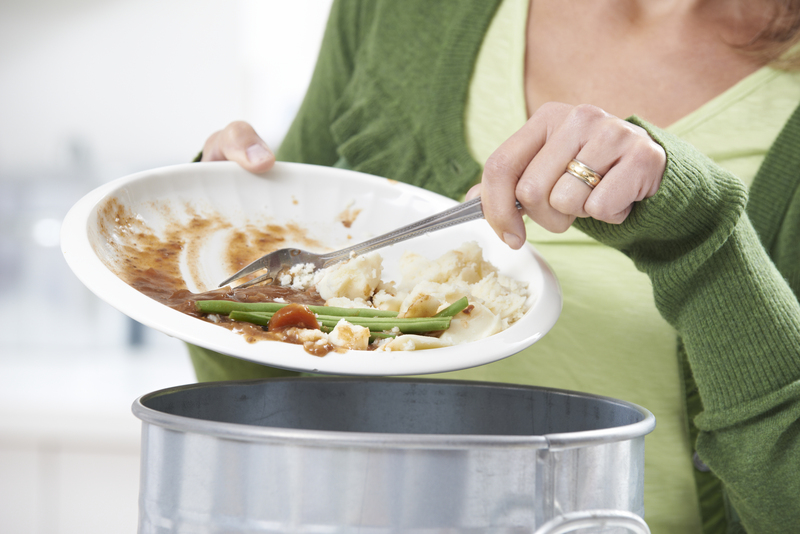Introduction: The Growing Need for Environmentally Conscious Waste Reduction
In our rapidly evolving world, cutting waste has become an essential responsibility for all individuals, businesses, and communities. Our environment faces significant challenges such as ocean pollution, landfills overflowing with garbage, and the depletion of natural resources. Addressing these issues requires environmentally conscious ways to cut waste from our daily lives. In this comprehensive guide, we will explore a variety of eco-friendly waste reduction tips and strategies that will not only help protect the planet but also enhance your sustainability journey.

Understanding Waste and Its Environmental Impact
Waste generation is at the core of environmental degradation. Every item we discard--plastic packaging, electronics, food waste, or clothing--contributes to pollution and resource depletion. By adopting sustainable habits and mindful consumption, we can collectively make a positive environmental impact and pave the way towards a greener future.
Types of Waste in Everyday Life
- Household Waste: Food scraps, packaging materials, paper, and disposable items.
- Plastic Waste: Single-use bags, bottles, utensils, and microplastics.
- Electronic Waste (E-waste): Unwanted gadgets, batteries, and appliances.
- Textile Waste: Old clothing, shoes, and fabric scraps.
- Industrial Waste: Manufacturing by-products, construction debris, and chemicals.
Top Environmentally Conscious Ways to Cut Waste
Implementing eco-conscious waste reduction methods doesn't have to be overwhelming. Simple lifestyle changes, smarter shopping choices, and fostering a reuse mindset can dramatically reduce the amount of waste sent to landfills.
Adopt the Three R's: Reduce, Reuse, Recycle
- Reduce: Consume fewer single-use products and opt for items with minimal or compostable packaging.
- Reuse: Give products a second life by repairing, donating, or repurposing rather than discarding them.
- Recycle: Properly sort recyclables like paper, glass, plastic, and metals according to local recycling guidelines.
Choose Zero-Waste Products and Packaging
- Bulk buying: Shop at zero-waste stores or bulk sections to limit packaging waste.
- Reusable containers: Bring your own jars, tote bags, and produce bags.
- Bar or powder formats: Prefer bar soaps, shampoo bars, and powdered cleaners over plastic-bottled options.
Composting: Transforming Food Scraps into Fertile Soil
Food waste is a major landfill contributor. By composting organic material, you can divert waste and enrich soil for gardening.
- Compost bins: Set up a backyard compost or a countertop bin for kitchen scraps.
- Community composting: Join local compost programs if you lack space at home.
- What to compost: Fruit and vegetable peels, coffee grounds, eggshells, yard clippings, and cardboard.
Opt for Sustainable Transportation
- Carpool or bike: Reducing car trips lowers emissions and reliance on non-renewable materials.
- Public transit: Using buses or trains significantly cuts down the resources used compared to private vehicles.
Minimize Food Waste with Smart Planning
Approximately one-third of all food produced globally is wasted. Environmentally responsible ways to cut waste in the kitchen include:
- Meal planning: Make grocery lists to avoid overbuying.
- Creative cooking: Use leftovers for soups, stews, or casseroles.
- Safe storage: Store food properly to extend shelf life.
Eco-friendly Alternatives for Everyday Items
Reusable Water Bottles and Coffee Cups
Invest in high-quality, dishwasher-safe bottles and mugs. Single-use plastic can take hundreds of years to degrade, but reusable options help reduce waste instantly.
Swapping Paper Towels for Cloth
Switch to machine-washable cloth napkins or rags. This simple switch can save thousands of single-use paper towels per year.
Eco-Conscious Personal Care
- Bamboo toothbrushes instead of plastic ones.
- Bar soaps and shampoo to minimize packaging.
- Reusable facial rounds in place of disposable cotton pads.
Sustainable Shopping Habits
- Buy secondhand: Shopping at thrift stores reduces textile waste and extends product lifecycles.
- Support local: Purchasing from local producers cuts packaging and transportation emissions.
Cutting Down Waste at Work and School
Incorporate eco-friendly waste reduction strategies into your work or study environments:
- Go digital: Limit paper usage by embracing electronic documents.
- Pack lunch: Use reusable containers for food and drinks.
- Set up recycling bins: Ensure recycling is accessible and clearly labeled.
Innovative and Advancing Trends in Waste Reduction
Technology and green innovation offer new environmentally conscious ways to cut waste:
- Upcycling: Creative reuse transforms 'waste' into valuable items like furniture, decor, or accessories.
- 3D printing with recycled materials: Reduces raw material inputs and repurposes waste plastics.
- Biodegradable alternatives: Compostable bags and packaging made from cornstarch, mushrooms, or seaweed.
- Smart bins and apps: Technology that monitors waste output and helps track reduction goals.
Community Initiatives and Policy Advocacy
Large-scale impact requires collective action. Encourage your community to adopt sustainable waste management:
- Neighborhood cleanups and litter drives.
- Community composting and recycling centers.
- Advocating for bans on single-use plastics and promoting waste reduction policies.
- Educational workshops on eco-friendly lifestyles and low-waste living.
Making Mindful Purchases: The Role of the Eco-Conscious Consumer
Every purchasing decision sends a message to manufacturers and retailers. To encourage environmentally conscious manufacturing:
- Research brands and their sustainability practices.
- Support companies that use recycled materials or eco-friendly packaging.
- Demand transparency in supply chains and product ingredients.
- Consider product certifications, such as Fair Trade, USDA Organic, or Cradle to Cradle.
Reducing E-Waste: Responsible Technology Disposal
Electronic waste contains hazardous materials and should be handled with care. Here's how you can help minimize e-waste:
- Repair before replacing devices.
- Donate functioning gadgets to schools or charities.
- Recycle electronics through certified e-waste programs.
- Purchase refurbished or upgradeable tech products.
Eco-Conscious Holidays and Celebrations
Special occasions often result in excessive waste. Try these sustainable celebration tips:
- Choose reusable decorations, tableware, and gift wrap.
- Gift experiences instead of material items.
- Compost party leftovers and encourage recycling among guests.

Measuring Your Progress and Staying Motivated
Tracking your efforts is key to staying committed to cutting waste:
- Keep a record of your waste output and goals.
- Share your journey with friends and on social media to inspire others.
- Celebrate milestones and look for new environmentally friendly ways to reduce waste as you improve.
Conclusion: The Collective Impact of Waste Reduction
Small, consistent changes--whether in your shopping habits, in the kitchen, at work, or in your community--add up to major environmental benefits. By embracing these eco-friendly waste reduction strategies, you not only cut waste but also promote cleaner air, water, and a healthier planet for future generations.
Remember, each act of environmental consciousness sends a positive ripple through our world. It's never too late to start making a difference--make your next choice a green one!